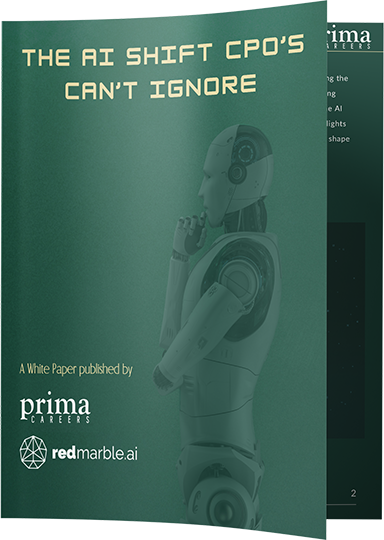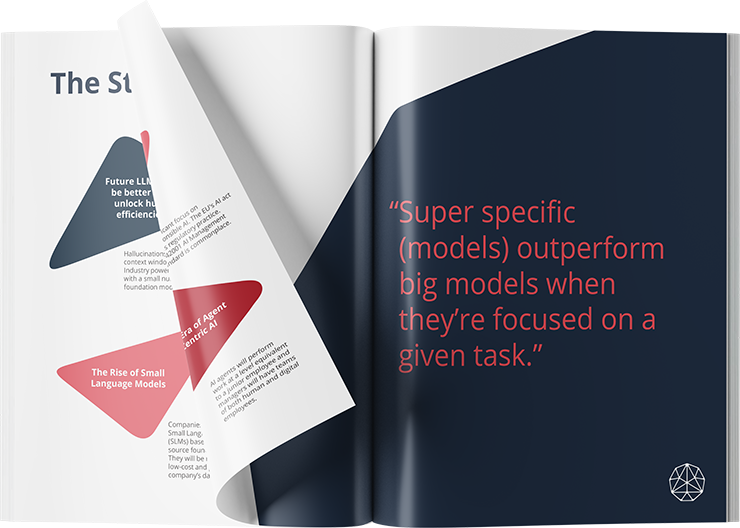Human brains are amazing things, capable of things that computers just can’t do. AI is amazing too. Combining AI with human smarts elevates human ability to new levels. Our work focuses on using artificial intelligence to augment human capabilities and make workforces more productive.
At Red Marble, one of our offerings is to help clients develop and commercialise AI-powered products. We also develop and license our own products, always with an overarching focus on how AI can enhance human performance and workforce productivity.
Embedding AI into a product allows us to solve one specific business problem extremely well. And as the software learns, the solution improves over time.
So what makes a good AI product? What elements do we look for to predict commercial success?

How we define an AI-enabled product
- A set of code and algorithms solving a specific, clearly defined, repeatable business problem in an area of business value.
- Has defined inputs and outputs and can be deployed as a service
- Includes algorithms and machine learning with feedback methods to learn, and becomes more intelligent the more data it consumes.
- Based on unique and specific data which is usually not freely available (and more data creates a barrier to entry).
- Can be deployed for sufficient time for the model to learn and to fulfil its potential.
- Requires minimal (< 20%) configuration for a specific customer and doesn’t require large consulting effort to implement.
- Harnesses the power of technology to augment human capabilities
That last point is fundamental to what we do. We’re here to enhance human performance
and elevate human productivity – not replace people with machines.
It’s important to note here that a lot of the work in developing AI-based solutions is not machine learning; around 75% of the work relates to software engineering, data cleansing, data engineering and similar tasks. The actual model development, although often the most valuable part, is relatively small (Bastian Huang from Osara in the US describes the issue nicely here.). So it’s crucial that we’re factoring in those other tasks when we think about creating a new product.
There’s a couple of key considerations which are important to contemplate up front.
Start with the business challenge, not the technology
There are two ‘non negotiables’ before we develop a product:
- It needs to focus on a clearly-identified and specific business problem
- We need to be able to generalise the model across multiple customers
If those aren’t in place, the work should probably be considered as a software development exercise with intelligent algorithms part of the solution, but not a product offering.
We like a product to have a single ‘job to be done’, which keeps us focused on the business challenge, and how we solve it in a generalised way.
Work out how you will tackle the ‘long tail’
A big challenge of developing any product incorporating AI and machine learning is the ‘long tail’ – the large number of items which exist in small quantities, rather than the smaller number of popular items.
The concept is described nicely in this article:
“Supervised learning models tend to perform well on common inputs (i.e. the head of the distribution) but struggle where examples are sparse (the tail). Since the tail often makes up the majority of all inputs, ML developers end up in a loop – seemingly infinite, at times – collecting new data and retraining to account for edge cases.”
Many machine learning models can have a disproportionately long tail and the cost of training the model can rise exponentially, often making the project unviable without deep pockets. That’s why we prefer models where the ML does the heavy lifting, managing the bulk of cases, and allowing human team members to manage edge cases. That way we can still provide a great amount of value while keeping costs lower.
Our product journey
We’re currently working on a number of products, where we focus on incorporating intelligence into software, but always with the human at the centre. We view every opportunity through a human-centric lens. Being so attached to people may sound odd for an AI company, but it helps us (and you) reach our core goal: liberating humans to achieve more.
Want to know more about our AI-enabled product development approach and see if and how it can help you? Get in touch and let’s discuss your biggest challenges.












